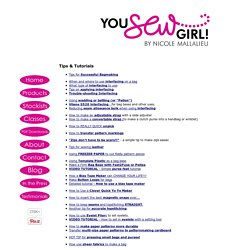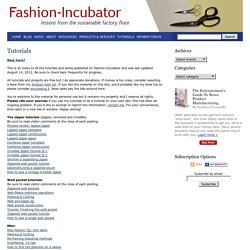

So what's all the fuss about Bias Tape Makers...? ...They will CHANGE YOUR LIFE, that's what!!!

Little wonder that a few were mentioned on "This Is My Trade Secret" posts, or in the comments following. I particularly like the Clover Bias Tape Maker (well, Clover seem to do a pretty good job of just about EVERYTHING, don't they?). Since discovering them I've bought one in every size and have been happily binding anything I can possibly bind. After years of doing this the LONG WAY around, I can't get over how quick it is now. A bias tape maker makes perfect bias tape in the fabric of your choice, and makes it so that the seam allowances go ALL THE WAY TO THE CENTRE (unlike the store-bought variety), so there's little chance of fraying edges if you go a little bit wobbly with your stitching!! A quick tutorial.... 1. 2. 3. With the Clover 6mm bias tape maker there's a handy little hole in the bottom that allows you to move the fabric through with a pin. 4. Isn't that easy...?
Stay tuned tomorrow to see who's the winner. Nicole Mallalieu Design - Tips and Tutorials for Making Bags and Purses. Tips & Tutorials Back to top VIDEO TUTORIAL - How to set in eyelets with a setting tool VIDEO TUTORIAL - Simple method for inserting purse feet.

VIDEO TUTORIAL - How to Use a Clover Quick Yo Yo Maker This is an absolute must-read for anyone embarking on bag-making! ALWAYS use interfacing on any bag piece where the pattern reads "cut [specified number] i/f". Interfacing creates structure if it is used on the body of the bag - but is entirely optional here, and using it depends on the weight of the fabric and the finished look that you require. By fusing interfacing to every piece of the outside of the bag you'll add a lot more structure and "OOMPH" to the fabric.
You can interface the lining if you want a stiff lining, but it shouldn't be the main support in the bag. It's important to remember that by adding an extra layer of interfacing to a bag piece, you are also increasing the bulk of the fabric. Click here to see the range of interfacings at Nicole Mallalieu Design. Tutorials. New here?

This is an index to all the tutorials and series published on Fashion-Incubator and was last updated August 14, 2012. Be sure to check back frequently for progress. All tutorials and projects are free but I do appreciate donations. If money is too crass, consider selecting a book from my Amazon wish list. If you like the material on this site, you’d probably like my book too so please consider purchasing it. You’re welcome to the material for personal use but it remains my property and I reserve all rights. The zipper tutorials (lapped, centered and invisible) Be sure to read visitor comments at the close of each posting.
Welt pocket tutorials: Be sure to read visitor comments at the close of each posting. Jacket, vest and leather tutorials Also see the “nameless tutorial series” below this heading. Installing an Invisible Zipper. Zippers can be daunting even for experienced sewers.

The reason? Zippers are often installed the wrong way. Lots of seam ripping and swearing ensues, especially when it’s a simple mistake. There’s no need to be scared of zippers anymore! We’re here to help. With this tutorial we cover how to install an invisible zipper. Items Needed: invisible zipperthreadscissorspinsinvisible zipper footzipper footgarment Before we start, take a look at the back of your invisible zipper. 1. Zipper tape is usually smaller than 5/8″ 2. Place the pins parallel to the zipper 3. 4. Sewing slowly helps prevent the fabric from puckering 5. 6. Double check your zipper before sewing 7. Remember to back stitch at the end of the zipper 8. 9. Make sure the seam allowances line up 10. Keep your seam line even to avoid puckering 11. 12.
And there you have it!